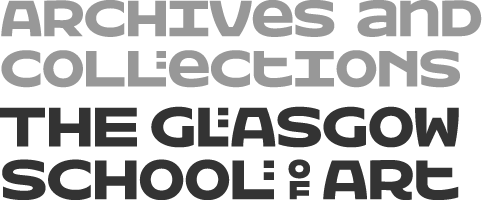William Leiper was born in Glasgow on 21 May 1839, the son of William Leiper who had a private school in George Street, and Jane Mellis, or Myles.
Educated by his father and at Glasgow High School, he served his apprenticeship with Boucher & Cousland from '1855-6' to about 1859 when he went to London, working for John Loughborough Pearson and William White for approximately one year each. There he gained an entrée to the circle of Edward William Godwin and William Burges, who was later to propose him as FRIBA. He was briefly in Dublin supervising the building of Findlater Church for Andrew Heiton, before moving back to Glasgow to join Campbell Douglas & Stevenson.
Leiper's reputation was immediately established by winning the competition for Dowanhill Church, Glasgow in 1864. Its interior was remarkable for its very wide single-span roof, probably inspired by Godwin's at Northampton Town Hall, and for its glass and stencilled decoration by Daniel Cottier.
In some of his less expensive early domestic commissions he adopted the low-pitched roofs and compositional methods of Alexander Thomson, a friend in his early years, notably at Bonnington (now Rhuarden), Helensburgh, Dumbartonshire, and Castlepark, Lanark, which has an unusual combination of Swiss and Anglo Japanese elements.
By 1869 he had developed his own Frenchified version of Scottish baronial with lettered and sculptured towers and turrets at the compactly-composed Colearn, Perthshire, remarkable for its high quality aesthetic movement woodwork, Cottier stained glass and Anglo-Japanese tiles by W B Simpson. Cairndhu, Helensburgh (1871) also had lavish Anglo-Japanese interiors of which a gold ceiling survives. Its exterior was a very early example of Francois Ier revival as was his Partick Burgh Hall, Glasgow, the following year, in which the French architect Alfred Chastel de Boinville may have been involved.
Leiper's commercial commissions were few but impressive. In 1889, as an architectural advertisement for their carpets, he built the polychrome red stone, brick and tile Venetian Gothic Templeton Factory on Glasgow Green and in 1893-94 the gargantuan Francois Ier Sun Insurance Building on Glasgow's West George Street on which William James Anderson and James Salmon Junior also worked and for which Birnie Rhind provided the sculpture, the French being sufficiently impressed to award him a Silver Medal at the Paris Exhibition of 1900.
From his earliest days Leiper was a skilful watercolourist and experimented with photography. In or about 1878 he took a career break to study painting. The reasons are not entirely clear and have been said to relate to disappointments in two limited competitions, , but his partner William Hunter McNab's statement that the City of Glasgow Bank Crash and consequent lack of business was the cause seems more probable. He studied in Paris at Julian's and then at R W Allan's with Arthur Melville. Although the worst years of the depression were still to come, the commission to design the interior of the Tsar's yacht Livadia in 1880 brought him home, his return to architectural practice being marked by his being admitted to FRIBA on 7 November 1881. His proposers were John Honeyman, Pearson and Burges. None of his paintings is in a public collection, but his numerous artist friendships, which included William McTaggart, brought him the commission to supervise the ambitious scheme of murals by The Glasgow Boys in the Banqueting Hall of Glasgow's City Chambers. Leiper was elected associate of the Royal Scottish Academy in 1891 and full member in 1896. From 1870 onward he exhibited works in watercolour and oil as well as architecture.
Leiper never married. After a protracted illness which resulted from serious blood poisoning in 1903, Leiper was compelled to retire completely in 1909 and his practice was continued by his partner William Hunter McNab, an accomplished designer in the same idiom. Leiper died of a cardiac haemorrhage at Helensburgh on 27 May 1916.
A portrait of him by Colin Hunter hangs in Aberdeen Art Gallery.
